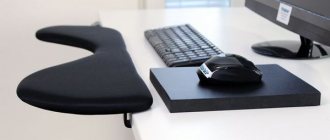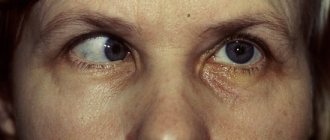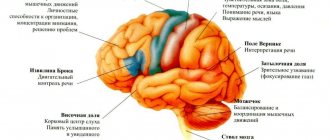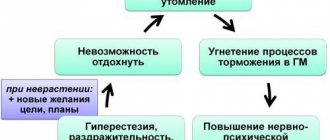Radial neuritis - what is it?
The radial nerve runs along the back of the humerus, it is part of the posterior bundle of the brachial plexus. This nerve causes the triceps muscle, hand, elbow muscle, muscle responsible for supination of the forearm and finger extensors to move, and controls the sensitivity of the back of the hand (namely the area between the 2nd and 1st fingers). If the radial nerve is affected, the upper limb is almost completely immobilized: the person is unable to write normally, lift and lower objects, knit, or perform other actions associated not only with fine motor skills, but also with coarser ones (holding objects in the hand: a glass, knife, spoon, etc.).
Homeopathy and traditional medicine
Among the traditional methods for the treatment of neuropathies of the upper extremities, herbs are used, from which ointments, alcohol rubs, as well as restorative teas are made. It is better to combine drug treatment with traditional recipes or homeopathic medicines.
Herbs used to make rubs:
- Burdock root. Boil 1 spoon in a glass of red natural wine, then the mixture is infused for an hour and can be taken half a glass twice a day.
- Rosemary . An alcohol tincture is prepared from it - fresh leaves are poured with vodka and left for 3 weeks, shaking occasionally.
- Elecampane root. Boil a tablespoon in a glass of water, leave and drink for 30 days.
Anti-inflammatory, antiviral and antibacterial agent – clove spice . It is poured with boiling water in the amount of 1 tablespoon per 500 ml of water. Leave in a thermos for 2 hours, then drink a glass three times a day for 2 weeks. Then take a break for 10 days and drink again for 2 weeks. Thus, it is necessary to withstand 6 months.
Among the homeopathic remedies available in the pharmacy, you can drink traumeel - this is an anti-inflammatory drug that has a positive effect on the entire body.
DIAGNOSIS OF RADIAL NERVE NEURitis
The doctor will have to make sure that this lesion of the radial nerve is neuritis; for this, the Naran clinic performs a special pulse diagnosis: careful listening to the pulse allows an experienced specialist to determine the degree of functionality of a particular organ, the patient’s emotional state and even the presence of mental problems. Other diagnostic methods are also mandatory: questioning and examination. In addition, some functional tests are carried out, for example:
- the patient stands with his arms down, the doctor asks him to turn his hand, palm up, and move his thumb to the side;
- the patient places the hand on the table with the back side up, the doctor asks to press the fingers to the plane without lifting the hand from it;
- the patient places the hand on the table, the doctor asks to place the middle finger on top of the index or ring finger;
- the patient presses his palms together, the doctor asks to spread the fingers of both hands to the sides.
Who will treat you?
Bogdanov Vadim Yurievich
Chief traumatologist-orthopedist..
Read more
Ronami Valery Guseinovich
neurologist, reflexologist, chiropractor, professor, doctor of medical sciences.
More details
Dremin Evgeniy Vitalievich
neurologist, reflexologist, chiropractor.
Read more
Repeated appointments with a neurologist based on examination results in our clinic are free.
CAUSES OF RADIAL NERVE NEURITIS
Research by Tibetan healers has long revealed a direct connection between neuropathy and a disorder of the Wind constitution, which is responsible for the nervous system, mental activity, rhythm of the heart, intestinal motility, and muscle activity.
It is believed that neuritis is a “cold blood” disease: Wind is very sensitive to prolonged exposure to low temperatures. It is extremely important to start herbal medicine on time and act on the disturbance of this constitution with external methods of Tibetan medicine in order to prevent its spread throughout the body. However, other reasons cannot be excluded:
- long-term, untreated osteochondrosis of the cervicothoracic spine
- anatomical feature;
- previous injury in the neck, shoulder, elbow;
- compression of the nerve (for example, during sleep, when the head rests on the hand for a long time);
- infection or intoxication.
When is surgery indicated?
- Impaired sensitivity and movement function.
- Tumors.
- Painful neuromas.
- Compression by scars.
- Damage due to trauma.
- Pain syndrome.
Taking into account the nature of the injury, the method of surgical treatment is selected:
- Excision of scar formations – neurolysis;
- Connecting the nerve sheath and applying a special suture;
- Carrying out plastic surgery of nervous tissue.
During surgical treatment, microsurgical techniques are used to make the comparison as accurate as possible.
The patient may experience the following symptoms of neuritis:
- disorder of muscle tone of the hand and forearm;
- paresis or paralysis of the muscles of the hand and other innervated muscles. After about a couple of weeks, the muscles begin to atrophy;
- violation of individual reflexes: with mechanical impact (for example, a blow with a hammer) on the periosteum or tendon, the muscles do not contract;
- loss (complete or partial) of sensitivity (it seems like “goosebumps are crawling” or numbness is felt);
- “clawed paw” - the adequate ability to extend and bend the fingers is impaired, the middle phalanges are sharply straightened and the tips of the fingers are bent, the hand resembles the paw of an animal;
- difficulty spreading your fingers to the sides;
- involuntary drooping of the hand. It becomes especially noticeable when the arm is stretched forward: the hand hangs down, and it becomes impossible for the patient to straighten it or the fingers.
ABOUT TREATMENT OF RADIAL NERVE NEURitis
If you are faced with neuritis of any origin, give up the idea of self-medicating.
Contacting an experienced doctor will protect you from unpleasant consequences and relapses, and will allow you to quickly restore the motor activity of the injured arm. Radial nerve neuropathy is a “cold” disease, so first of all, the doctor will probably recommend procedures that warm the body and force the qi energy to actively circulate:
- stone therapy;
- Mongolian moxibustion;
- warming up with wormwood cigars.
Treatment methods that affect the bioactive
are almost 100% effective :
- acupuncture;
- Su-Jok therapy;
- hirudotherapy;
- acupressure.
Treatment of any disease must be comprehensive; the importance of methods such as:
- lifestyle changes
: a good night's sleep, positive thoughts; - nutrition correction
. If there is an imbalance in the nervous system, foods with sour, sweet, spicy and salty tastes are recommended, preferably freshly prepared. You should limit drinking cool water, consuming fruits and vegetables, strong coffee and unsweetened tea; - herbal medicine
. Herbs that are collected in places with ideal ecology remove toxins, fill the body with healing energy, and have a mild anti-inflammatory effect.
Home gymnastics will not be superfluous: the patient can perform alternate squeezing and straightening of the fingers, putting them into a “lock” and other simple exercises for the hands.
Case from practice
A 38-year-old woman came to the Naran clinic with complaints of decreased sensitivity, limited flexion and extension of the fingers of her right hand. According to the patient, two weeks ago there was an injury to her right hand - the woman slipped and fell on her right hand. When contacting the trauma center, the fracture was not diagnosed. After a consultation at the Naran clinic, the doctor made a diagnosis: post-traumatic neuritis of the radial nerve.
A course of 11 sessions of complex treatment was carried out in combination with the use of Tibetan herbal remedies. The treatment complex included: deep acupressure of the whole body, acupuncture, vacuum therapy, stone therapy, moxotherapy. After completing the course of treatment, the woman’s condition improved significantly - sensitivity was restored and range of motion was restored. A repeat course of treatment was recommended to consolidate the effect after 6 months.
Tunnel syndromes of the hand
The following forms of hand tunnel syndromes are distinguished:
1.Median nerve tunnels
Carpal tunnel syndrome (wrist) - carpal tunnel syndrome, carpal tunnel syndrome
Pronator syndrome (pronator teres syndrome (in/3 of the forearm)) - Seyfarth syndrome, newlyweds' palsy, honeymoon palsy, lovers' palsy;
Supracondylar syndrome (n/3 shoulders) - Strother's band syndrome, Coulomb, Lord and Bedossier syndrome.
2. Ulnar nerve tunnels
Guyon's syndrome (palm) - ulnar carpal tunnel syndrome, Guyon's bed syndrome, compression-ischemic neuropathy of the distal part of the ulnar nerve;
Cubital tunnel syndrome (elbow) - compression neuropathy of the ulnar nerve in the cubital tunnel, cubital tunnel syndrome, late ulnar-cubital traumatic palsy.
3. Radial nerve tunnels
Radial nerve compression syndrome (in the armpit area) - “crutch paralysis”
Radial nerve compression syndrome (at the level of the middle third of the shoulder) - spiral canal syndrome, “Saturday night paralysis”, “park bench”, “bench” syndrome
Radial nerve compression syndrome (in the subulnar region) - tennis elbow, supinator syndrome, Froese syndrome, Thomson-Kopell syndrome, tennis elbow syndrome, compression neuropathy of the deep (posterior) branch of the radial nerve in the subulnar region.
Tunnel syndromes account for 1/3 of diseases of the peripheral nervous system. There are descriptions of more than 30 forms of tunnel neuropathies in the literature.
Causes
The anatomical narrowness of the canal is, according to many authors, only a predisposing factor in the development of tunnel syndrome. In recent years, evidence has accumulated indicating that this anatomical feature is genetically determined. Another possible cause of the development of tunnel syndrome may be the presence of congenital developmental anomalies in the form of additional fibrous cords, muscles and tendons, and rudimentary bone spurs.
Some metabolic and endocrine diseases (diabetes mellitus, acromegaly, hypothyroidism), diseases of the joints, bone tissue and tendons (rheumatoid arthritis, rheumatism, gout), conditions accompanied by hormonal changes (pregnancy), space-occupying formations of the nerve itself (schwannoma, neuroma) contribute to the development of tunnel syndrome ) and outside the nerve (hemangioma, lipoma). The development of tunnel syndromes is facilitated by frequently repeated stereotypical movements and injuries. Therefore, the prevalence of carpal tunnel syndrome is significantly higher in representatives of certain professions (for example, stenographers have carpal tunnel syndrome 3 times more often).
Clinical manifestations
The most characteristic feature of carpal tunnel syndrome is pain . Usually pain appears during movement, then occurs at rest. The pain may wake the patient at night. Pain in tunnel syndromes is caused by inflammatory changes occurring in the zone of nerve-canal conflict and nerve damage. Tunnel syndromes are characterized by such manifestations of neuropathic pain as a sensation of electric current passing (electrical shooting), burning pain. In later stages, pain may be due to muscle spasm
Then movement disorders arise, manifesting themselves in the form of decreased strength and rapid fatigue. In some cases, the development of the disease leads to atrophy and the development of contractures (“clawed paw”, “monkey paw”).
When arteries and veins are compressed, paleness occurs, a decrease in local temperature, or the appearance of cyanosis and swelling in the affected area.
Diagnostics
In some cases, it is necessary to conduct electroneuromyography (the speed of impulses along the nerve) to clarify the level of nerve damage. tunnel syndrome. Using ultrasound, thermal imaging, MRI, nerve damage, space-occupying formations or other pathological changes can be determined.
Principles of treatment
Stop exposure to the pathogenic factor. Immobilization with the help of orthoses, bandages, splints, allowing to achieve immobilization specifically in the area of damage.
Change the usual locomotor stereotype and lifestyle. Tunnel syndromes are often the result not only of monotonous activity, but also of ergonomic disorders (improper posture, awkward position of the limb during work). Training in special exercises and physical therapy are an important component of the treatment of tunnel neuropathies at the final stage of therapy.
Pain therapy
Anti-inflammatory therapy
Traditionally, for carpal tunnel syndromes, NSAIDs with a more pronounced analgesic and anti-inflammatory effect (diclofenac, ibuprofen) are used. For moderate or severe pain, it is advisable to use the drug Zaldiar (a combination of low doses of the opioid analgesic tramadol (37.5 mg) and the analgesic/antipyretic paracetamol (325 mg). Thanks to this combination, a multiple increase in the general analgesic effect is achieved with a lower risk of side effects.
Impact on the neuropathic component of pain. When pain is the result of neuropathic changes, it is necessary to prescribe drugs recommended for the treatment of neuropathic pain: anticonvulsants (pregabalin, gabapentin), antidepressants (venlafaxine, duloxetine), plates with 5% lidocaine "Versatis". Injections of anesthetic + hormones. An effective and acceptable treatment method for most types of tunnel neuropathies is a blockade with the introduction of novocaine and a hormone (hydrocortisone) into the pinched area.
Other methods of pain relief. An effective way to reduce pain and inflammation is electrophoresis, phonophoresis with dimexide and other anesthetics. They can be carried out in a clinic setting.
Symptomatic treatment. For tunnel syndromes, decongestants, antioxidants, muscle relaxants, and drugs that improve trophism and nerve functioning (ipidacrine, vitamins) are also used.
Surgical intervention. Surgical treatment is resorted to when other methods of helping the patient are ineffective. Surgical intervention consists of releasing the nerve from compression, “reconstructing the tunnel.”
According to statistics, the effectiveness of surgical and conservative treatment does not differ significantly a year later (after the start of treatment or surgery). Therefore, after a successful surgical operation, it is important to remember about other measures that must be followed to achieve a full recovery: changing locomotor stereotypes, using devices that protect from stress (orthoses, splints, bandages), performing special exercises.
Carpal tunnel syndrome
Carpal tunnel syndrome, or carpal tunnel syndrome, is a common form of compression-ischemic neuropathy. In the population, carpal tunnel syndrome occurs in 3% of women and 2% of men. It is caused by compression of the median nerve where it passes through the carpal tunnel under the transverse carpal ligament. The exact cause of carpal tunnel syndrome is not known. The following factors contribute to compression of the median nerve in the wrist area:
1. Trauma (accompanied by local swelling, tendon sprain).
2. Chronic microtraumatization, often found in construction workers, microtrauma associated with frequent repeated movements (in typists, with constant long-term work with a computer).
3. Diseases and conditions with metabolic disorders, edema, tendon and bone deformities (rheumatoid arthritis, diabetes mellitus, hypothyroidism, acromegaly, amyloidosis, pregnancy).
4. Volumetric formations of the median nerve itself (neurofibroma, schwannoma) or outside it in the wrist area (hemangioma, lipoma).
Clinical manifestations
Carpal tunnel syndrome is manifested by pain, numbness, goosebumps and weakness in the arm and hand. Pain and numbness extend to the palmar surface of the thumb, index, middle and ring fingers, as well as to the dorsum of the index and middle fingers. The following tests are used to clarify the diagnosis of carpal tunnel syndrome.
Tinel test
Tapping the wrist (above the median nerve passage) with a neurological hammer causes a tingling sensation in the fingers or pain radiating (electrical shooting) to the fingers; pain may be felt in the area of the tap. Tinel's sign is found in 26-73% of patients with carpal tunnel syndrome.
Durkan test
Compression of the wrist in the area of the median nerve causes numbness and/or pain in the I-III, half of the IV fingers.
Phalen test
Flexing or extending the wrist 90 degrees causes numbness, tingling or pain in less than 60 seconds. A healthy person may develop similar sensations, but not earlier than after 1 minute.
Opposition test
With severe thenar weakness at a later stage, the patient is unable to connect the thumb and little finger, or the doctor can easily separate the patient's closed thumb and little finger.
Differential diagnosis
Carpal tunnel syndrome must be differentiated from arthritis of the carpo-metacarpal joint of the thumb, cervical radiculopathy, and diabetic polyneuropathy.
Treatment
In mild cases of carpal tunnel syndrome, ice compresses and a decrease in load can help. If these measures do not help, the following is necessary:
- Wrist immobilization. using a splint or orthosis. Immobilization should be carried out at least overnight, and preferably for 24 hours a day in the acute period.
- Drugs from the NSAID group are effective if the inflammatory process dominates in the pain mechanism.
- If the use of NSAIDs is ineffective, it is advisable to inject novocaine with hydrocortisone into the wrist area.
- Electrophoresis with anesthetics and corticosteroids.
- Surgery. For mild or moderate carpal tunnel syndrome, conservative treatment is more effective. When all means of conservative care have been exhausted, surgical treatment is resorted to, which consists of partial or complete resection of the transverse ligament and release of the median nerve from compression. Endoscopic surgical methods are used.
Pronator teres syndrome (Seyfarth syndrome)
This is an entrapment of the median nerve in the proximal part of the forearm between the pronator teres bundles. It usually begins to manifest itself after significant muscle load for many hours with the participation of the pronator and flexor digitorum muscles. Similar types of activities are often found among musicians (pianists, violinists, flutists, and especially often among guitarists), dentists, and athletes.
Long-term tissue compression is of great importance in the development of pronator teres syndrome. This can happen, for example, during deep sleep when the newlywed’s head is positioned for a long time on the partner’s forearm or shoulder. In this case, the median nerve in the pronator snuffbox is compressed, or the radial nerve is compressed in the spiral canal when the partner’s head is located on the outer surface of the shoulder (see radial nerve compression syndrome at the level of the middle third of the shoulder). In this regard, to designate this syndrome, the terms honeymoon palsy, newlyweds' paralysis, and lover's palsy have been adopted. Pronator teres syndrome sometimes occurs in nursing mothers. In them, compression of the nerve in the pronator teres region occurs when the child’s head lies on the forearm for a long time.
Clinical manifestations
With the development of pronator teres syndrome, pain and burning occurs 4-5 cm below the elbow joint, along the anterior surface of the forearm, and pain radiates to the I-III, half of the IV fingers and palm.
Tinel syndrome
In case of pronator teres syndrome, Tinel's sign will be positive when tapping with a neurological hammer in the area of the pronator snuff box (on the inside of the forearm).
Pronator-flexor test
Pronating the forearm with a tightly clenched fist while creating resistance to this movement (counteraction) leads to increased pain. Increased pain can also be observed when writing (prototype of this test).
When studying sensitivity, a violation of sensitivity is revealed on the palmar surface of the first three and a half fingers and palm. Thenar atrophy in pronatar teres syndrome is usually not as severe as in progressive carpal tunnel syndromes.
Suprocondylar process syndrome of the shoulder (Strother's band syndrome, Coulomb, Lord and Bedosier syndrome)
In the population, in 0.5-1% of cases, a variant of the development of the humerus is observed, when a “spur” or supracondylar process (apophysis) is found on its distal anteromedial surface, the median nerve is displaced and stretched, which makes it vulnerable to damage.
This tunnel syndrome was described in 1963 by Coulomb, Lord and Bedossier and has almost complete similarities with the clinical manifestations of pronator teres syndrome: pain, paresthesia, and decreased flexion strength of the hand and fingers are detected in the area of innervation of the median nerve. In contrast to pronator teres syndrome, when the median nerve is damaged under Strather's ligament, mechanical compression of the brachial artery with corresponding vascular disorders is possible, as well as severe weakness of the pronator teres and minor pronators.
In the diagnosis of suprocondylar process syndrome, the following test is performed: when extending the forearm and pronation in combination with formed flexion of the fingers, painful sensations are provoked with a localization characteristic of compression of the median nerve. X-ray examination is indicated.
Treatment involves resection of the supracondylar process (“spur”) of the humerus and ligament.
Cubital tunnel syndrome
Cubital tunnel syndrome is compression of the ulnar nerve in the cubital tunnel at the elbow joint between the medial epicondyle of the humerus and the ulna. It ranks second in frequency of occurrence after carpal tunnel syndrome.
Cubital tunnel syndrome can be caused by frequently repeated flexion of the elbow joint, i.e. the disorder may occur with normal, frequently repeated movements in the absence of obvious traumatic injury. Relying on your elbow while sitting may contribute to the development of cubital tunnel syndrome. Patients with diabetes and alcoholism are at greater risk of developing cubital tunnel syndrome.
Clinical manifestations
Manifested by pain, numbness and/or tingling. Pain and paresthesia are felt in the lateral part of the shoulder and radiate to the little finger and half of the fourth finger. Another sign of the disease is weakness in the arm. For example, it becomes difficult for a person to pour water from a kettle. Subsequently, the hand on the sore arm begins to lose weight and muscle atrophy appears.
Diagnostics
In the early stages of the disease, the only manifestation other than weakness of the forearm muscles may be loss of sensation on the ulnar side of the little finger. The following tests can help verify the diagnosis of Cubital Tunnel Syndrome.
Tinel test
The occurrence of pain in the lateral part of the shoulder, radiating to the ring finger and little finger when tapping with a hammer over the area where the nerve passes in the area of the medial epicondyle.
Equivalent of Phalen's sign
Sudden bending of the elbow will cause paresthesia in the ring and little fingers.
Frohman's test
Due to weakness of the abductor policis brevis and flexor policis brevis, there will be excessive flexion at the interphalangeal joint of the thumb on the affected hand in response to a request to hold a paper between the thumb and index finger.
Wartenberg test
When you put your hand in your pocket, the little finger is moved to the side and does not go into the pocket.
Treatment
It is recommended to fix the elbow joint in an extension position at night using orthoses, hold the car steering wheel with your arms straightened at the elbows, and straighten the elbow when using a computer mouse. In the absence of a positive effect from the use of traditional means: NSAIDs, COX-2 inhibitors, splinting did not have a positive effect within 1 week, an injection of an anesthetic with hydrocortisone is recommended.
If the effect of these measures is insufficient, surgery is performed. All techniques for surgical release of the nerve involve moving the nerve anterior to the internal epicondyle. After the operation, treatment is prescribed to quickly restore nerve conduction.
Guyon's tunnel syndrome
It develops due to compression of the deep branch of the ulnar nerve in the canal formed by the pisiform bone, the hook of the hamate bone, the palmar metacarpal ligament and the palmaris brevis muscle. There are burning pains and sensitivity disorders in the IV-V fingers, difficulty in pinching movements, adduction and extension of the fingers.
The syndrome is very often the result of prolonged pressure from working tools (vibrating tools, screwdrivers, pliers), and is more common among gardeners, leather cutters, tailors, violinists, and people who work with jackhammers. May sometimes develop after using a cane or crutch. Enlarged lymph nodes, fractures, arthrosis, arthritis, ulnar artery aneurysm, tumors and anatomical formations around Guyon’s canal can also cause compression.
Differential diagnosis
In the hand, pain occurs in the hypothenar region and the base of the hand, as well as intensification and irradiation in the distal direction during provoking tests. Sensitivity disorders in this case occupy only the palmar surface of the IV-V fingers. On the back of the hand, sensitivity is not impaired.
Differential diagnosis is made with radicular syndrome (C8). Paresthesia and sensitivity disorders can also appear along the ulnar edge of the hand. Paresis and hypotrophy of the hypothenar muscles are possible. But with C8 radicular syndrome, the zone of sensory disorders is much larger than with Guyon’s canal, and there is no wasting or paresis of the interosseous muscles. With bilateral nerve damage, ALS is sometimes misdiagnosed.
Treatment
If diagnosed early, restricting activity may help. It is recommended to use fixators: orthoses, splints at night or during the day to reduce trauma.
If conservative measures fail, surgical treatment is performed to reconstruct the canal in order to release the nerve from compression.
Radial nerve compression syndrome
There are 3 options for compression lesions of the radial nerve:
- Compression in the armpit area. Occurs due to the use of a crutch, paralysis of the extensors of the forearm, hand, main phalanges of the fingers, abductor pollicis muscle, and supinator occurs. The flexion of the forearm is weakened, the reflex from the triceps muscle fades. Sensitivity disappears on the dorsal surface of the shoulder, forearm, partly the hand and fingers.
- Compression at the level of the middle third of the shoulder ("Saturday night paralysis", "park bench", "bench" syndrome). Occurs more often. But most often, compression occurs due to compression of the nerve on the outer back surface of the shoulder during deep sleep (often after drinking alcohol). Nerve compression can be caused by the partner's head lying on the outer surface of the shoulder.
- Compressive neuropathy of the deep (posterior) branch of the radial nerve in the subulnar region (supinator syndrome, Froese syndrome, Thomson-Kopell syndrome, tennis elbow syndrome).
This is a chronic disease caused by a degenerative process in the area of muscle attachment to the lateral epicondyle of the humerus. It manifests itself as pain in the extensor muscles of the forearm, their weakness and hypotrophy.
Treatment includes general etiotropic and local therapy. There is a possible connection between tunnel syndrome and rheumatism, brucellosis, arthrosis of metabolic origin, and hormonal disorders. Anesthetics and glucocorticoids are injected locally into the area of the pinched nerve. Physiotherapy is carried out, the prescription of vasoactive, decongestant and nootropic drugs, antihypoxants and antioxidants, muscle relaxants, ganglion blockers, etc. Surgical decompression with dissection of the tissues compressing the nerve is carried out if conservative treatment is unsuccessful.
Literature
- Al-Zamil M.H. Carpal syndrome. Clinical neurology, 2008, No. 1, pp. 41-45
- Berzins Yu.E., Dumbere R.T. Tunnel lesions of the nerves of the upper limb. Riga: Zinatne, 1989, p.212.
- Zhulev N.M. Neuropathies: a guide for doctors. - St. Petersburg: Publishing house SpBmapo, 2005, p.416
- Levin O.S. "Polyneuropathy", MIA, 2005
- Atroshi I., Larsson GU, Ornstein E., Hofer M., Johnsson R., Ranstam J. Outcomes of endoscopic surgery compared with open surgery for carpal tunnel syndrome among employed patients: randomized controlled trial. BMJ., Jun 24 2006; 332(7556):1473.
- Graham RG, Hudson DA, Solomons M. A prospective study to assess the outcome of steroid injections and wrist splinting for the treatment of carpal tunnel syndrome. Plast Reconstr Surg., Feb 2004; 113(2):550-6.
- Horch RE, Allmann KH, Laubenberger J., et al. Median nerve compression can be detected by magnetic resonance imaging of the carpal tunnel. Neurosurgery, Jul 1997; 41(1):76-82; discussion 82-3.
- Golubev V.L., Merkulova D.M., Orlova O.R., Danilov A.B., Department of Nervous Diseases of the I.M. Sechenov Faculty of Physics and Postgraduate Medical Academy
FAQ
Is it possible to cure a disease without drugs?
To choose the right treatment for radial neuritis, you need to know the cause of the disease, and it is better if a doctor does this. The Naran clinic does not use pharmaceuticals, but only prescribes natural Tibetan herbal medicines, which have a healing, harmonizing effect on the nervous system as a whole. Herbal medicine is used in combination with external procedures prescribed individually to each patient.
Bibliography
- Tibetan medicine: Big encyclopedia / Svetlana Choizhinimaeva. - Moscow: Eksmo, 2015. - 384 p. - (Russian Medical Library). ISBN 978-5-699-79532-1.
- “Choosing vitamins.” — Iozefovich O.V., Ruleva A.A., Kharit S.M. — Issues of modern pediatrics — 2010.
- Haglund MM, Moore AJ, Marsh H, Uttley D. Outcome after repeat lumbar microdiscectomy. // Br J Neurosurg. – 1995 – V. 9 – P.487–95.
- Delicious food. Tibetan medical science about the art of food / Svetlana Choizhinimaeva. — Moscow: Arguments of the Week, 2021. — 320 p. ISBN 978-5-9908777-0-2.
- Notes of a doctor of Tibetan medicine / Svetlana Choizhinimaeva. — Moscow: Arguments of the Week, 2021. — 160 p. — ISBN 978-5-6040607-2-8.
- McGirt MJ, Ambrossi GL, Datoo G, Sciubba DM et al. Recurrent disc herniation and long–term back pain after primary lumbar discectomy: review of outcomes reported for limited versus aggressive disc removal. // Neurosurgery. – 2009 – V.64 – P.338–45.
- "Physiological basis of nutrition." Zinchuk V.V. — Journal of Grodno State Medical University — 2014.
Discussion
The recurrent radial arteries are branches of the radial artery passing between the trunk of the spinal nerve and having an anastomosis with the distal portion of the deep brachial artery [15]. The literature [16–20] provides a description of various neurovascular compression syndromes of the arms with different patient management tactics: compression of the anterior interosseous nerve by a branch of the anterior interosseous artery, compression of the ulnar nerve in Guyon’s canal due to thrombosis or aneurysm of the ulnar artery, compression of the ulnar nerve by the recurrent radial arteries, compression of the brachial plexus of the posterior scapular artery.
The ultrasound picture of compression neuropathy of the recurrent radial arteries is described only in one observation (2013), in which C. Rolla Bigliani et al. [19] presented a case of changes in the shape of the nerve with subsequent confirmation of the diagnosis intraoperatively.










